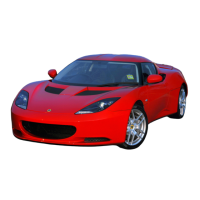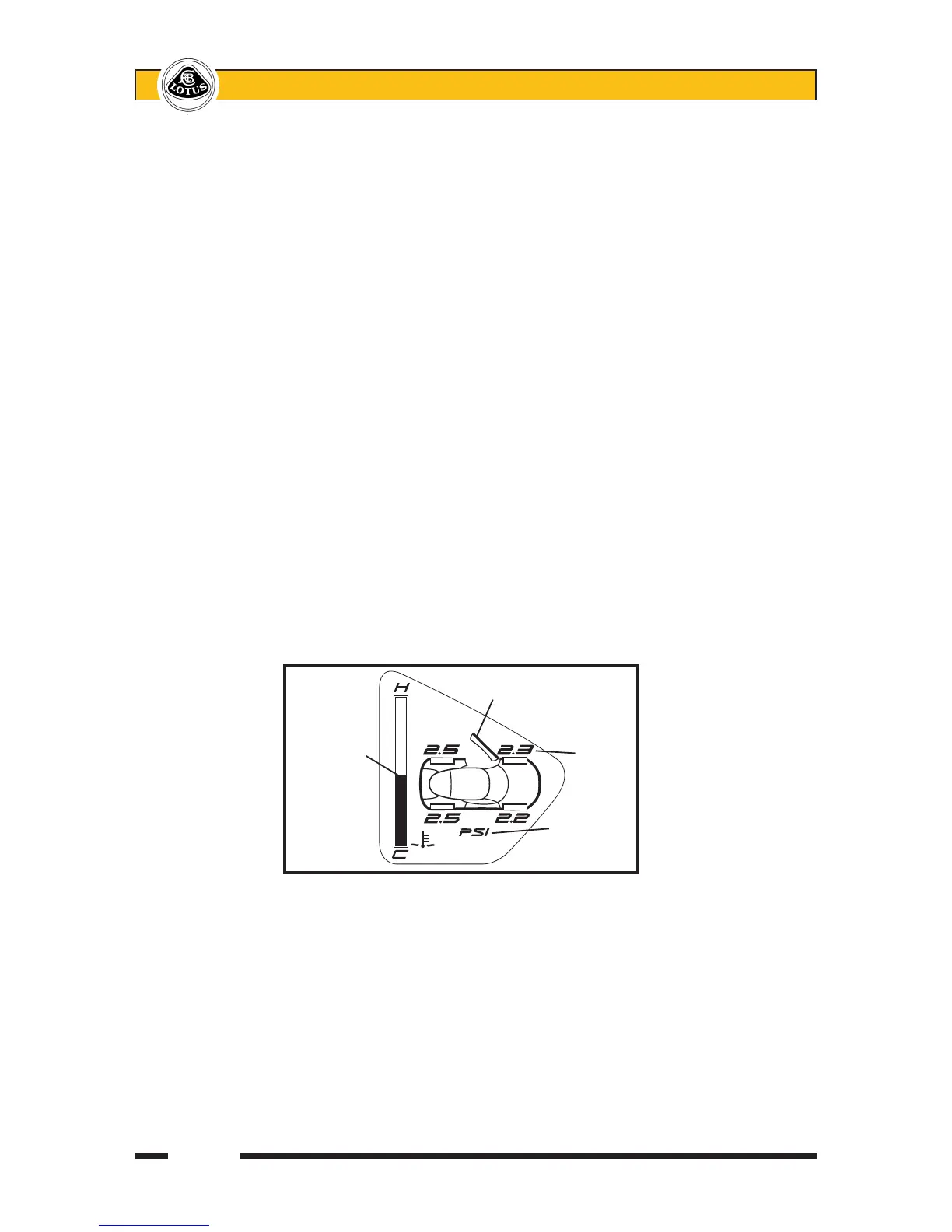Page 16
Lotus Service Notes Section MR
Ambient temperature units
- Current temperature display units will now be displayed. To change from °C to °F, or vice-versa, press
momentarily the info. button.
- To retain the displayed units, press the info. button for more than one second to enter the next mode:
Tyre pressure units (if TPMS is tted)
- Current tyre pressure units will now be displayed. To change from bar to psi, or vice-versa, press mon-
entarily the info. button.
- To retain the displayed units, press the info. button for more than one second to exit the adjustment
mode.
With the ignition ON, the info. button operates the trip functions as follows:
Trip Recorder
Theinstrumentpanellefthandscreenallowsamenuoftripfunctionstobedisplayed,selectedbythe‘info’
switch on the end of the steering column left hand stalk. When the ignition is turned ON, the panel will display
the trip distance since the last reset, in either miles or kilometres, dependent on market.
A single momentary press of the info. button will scroll to the next function in the following sequence:
- Trip distance.
- Range; Driving distance available on current fuel level, based on average fuel consumption since reset.
- Average fuel consumption; In mpg or km/l dependent on market. This display will be blank for the first 5
minutes of driving time since reset, to allow data to stabilise.
- Road speed; Displayed digitally in alternative units (mph or km/h) to those of the analogue instrument.
- Trip distance.
The Trip Distance, Range, and Average Fuel Consumption can all be reset, by selecting that function and
then pressing the info. switch for more than one second until the display zeroes.
Coolant Temperature Display
An indication of the engine coolant temperature is displayed, with ignition on, in the form of a vertical bar
graph in the instrument panel right hand screen. To optimise display space, the shown scale commences at
60°C (140°F), and finishes at 120°C (250°F).
The running temperature will fluctuate a certain amount as the operating conditions change, and during
periods of idling or in heavy traffic, the temperature may rise to over 100°C (212°F), with the cooling fans switch-
ing on at half speed at approximately 98°C (208°F), and full speed at approximately 103°C (217°F). In order
to prompt closer monitoring by the driver of temperatures over 110°C (230°F), the temperature icon will flash
andbeaccompaniedbythemessage‘Engine too hot’displayedabovethecarsilhouette.
The pressurised cooling system has a boiling point of over 120°C (250°F), and if the temperature ap-
proaches this level, the car should be stopped and the engine allowed to idle for a few minutes whilst the
temperatureismonitored.Ifthetemperaturecontinuestorise,thereisadangerofenginedamage;switchoff
and seek qualified assistance.
NOTICE: After a heavy snowfall, ensure that the radiator cooling outlet grille in the front body is cleared of
snow before driving the car, or overheating may result.
Door open indication
Engine
temperature Tyre
pressure
Pressure
units
RH SCREEN ohe34

